3.1 Skimming
Erin Thomas, MFA
Go Shallow
Skimming is a type of fast reading. We call it skimming because our eyes move quickly over the surface of a text to get a general idea of what a text is about. Typically, you skim better if you look over the title, subtitle, and images in a text before reading it.
When you think of skimming vs. reading in depth, you should think of the difference between a water skier and a scuba diver. A water skier moves quickly over the surface of the water, just as your eyes should move quickly over the surface of a text. This can be compared with a scuba diver, who does much more than just touch the surface. A scuba diver immerses herself in the water and will spend much more time swimming, observing, and understanding what lies beneath the surface. When you are reading deeply to understand a text, you should immerse yourself, so you are concentrating fully.
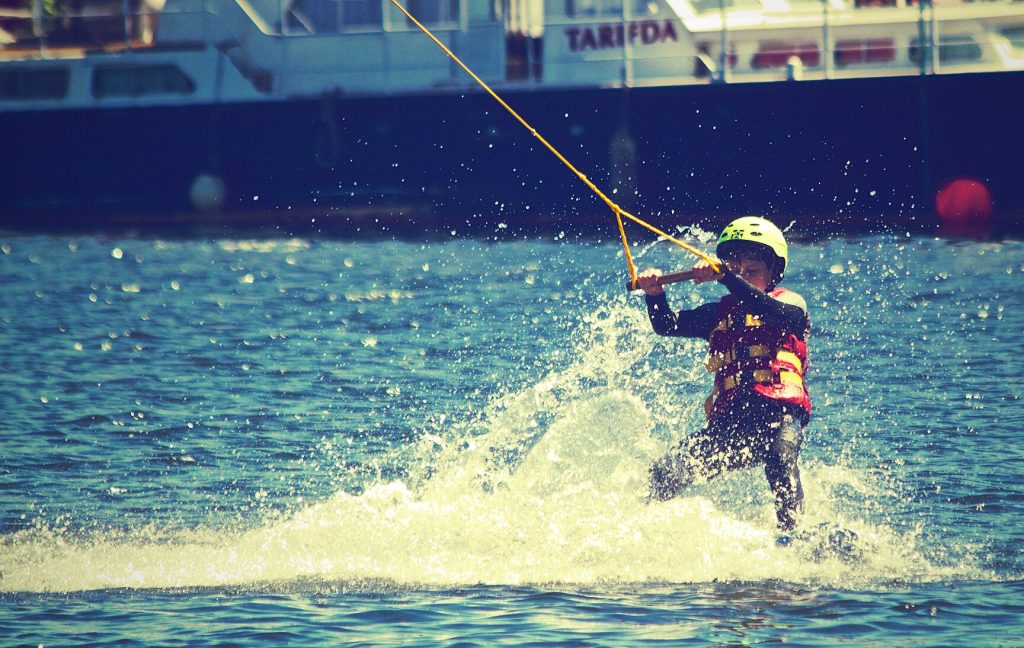
You are probably more adept at skimming than you realize because it’s the type of reading that most people use to scroll through their social media pages and email. We browse quickly over the subject lines of email. We skim news articles and social media posts for main ideas before we decide to dive in. Skimming is an excellent way to rapidly evaluate whether a text is worth deeper consideration. Therefore, we use skimming to decide what to read and also to decide what not to read.
Skimming is about four times faster than normal reading. It is typically easier to skim on a printed page vs. a computer, so if a text is important to comprehend, sometimes it’s better to print it out or buy a print version of a textbook. Also, not everybody skims the same. The following are some skimming approaches:
- Focusing on the headings, overviews, abstracts, chapter summaries, introductions, and conclusions.
- Reading the first and last line of every paragraph
- Moving over the text randomly, focusing in on ideas of interest
- Skimming the entire text.
Skimming is a strategy that can be used for multiple purposes, including the following:
- When you are looking for the right article or text to read
- When you are deciding whether a message, email, or letter is important
- In order to get a general sense of the text before deeper reading (This can help relieve reading anxieties and improve your understanding.)
- When you are browsing the Internet for casual reading
- To review a textbook chapter before taking a test
When you are skimming, you should not worry about comprehending everything. People who skim effectively relax and just try to get the main idea of a text. Two important things to remember when you are skimming are the following:
- Don’t get stuck. Keep your eyes moving along the line of the text quickly.
- Don’t drift off. Maintain your focus on the text.
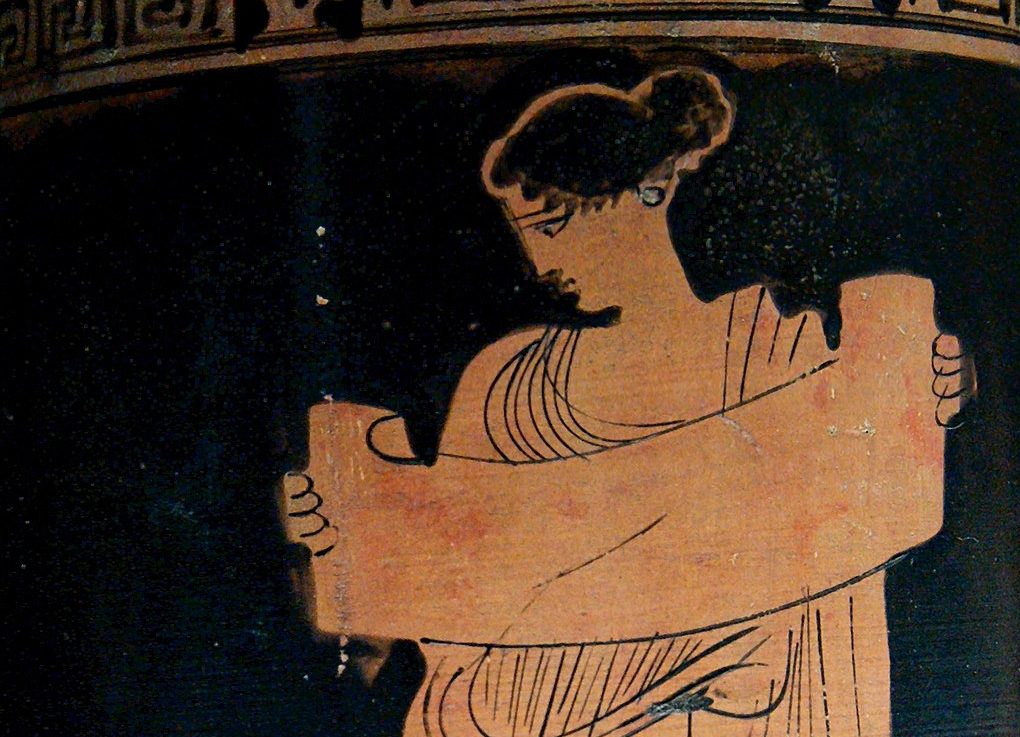
Most people don’t even notice when they skimming Facebook or Instagram, but when skimming in an academic or work setting, it’s important to skim much differently. The words are much more technical, and the sentences are longer. You should move your eyes quickly while holding your concentration on the general meaning of the text. Sometimes It might feel similar to patting your head and rubbing your stomach at the same time because it requires so much mental control. In short, just because skimming is fast reading, it doesn’t mean that it’s lazy reading. Sometimes skimming quickly and effectively is absolutely essential – like when you forget to read your textbook chapter and have 10 minutes before your quiz.
Skimming Practice
Exercise 1
In this exercise, you will use the text below on Jesse Owens to practice skimming.
Instructions:
- Read the title and subtitles in the text “Jesse Owens.”
- Use the timer on your cell phone or computer to time yourself. Skim the article as fast as you can – meaning that you are catching approximately 30-50% of the meaning while moving your eyes quickly over the surface of the text. Make sure to focus on the first and last sentences of each paragraph. You can skip through the middle of a paragraph more quickly.
- Write down your time:
- Skim the article again while timing yourself. Continue to hold your focus, but try to increase your speed.
- Write down your time:
- Skim the article once more while timing yourself. Continue to hold your focus, but try to increase your speed.
- Write your time:
- After skimming, try to answer the questions at the end of the text. If you need to, skim back over the text to answer the questions.
Jesse Owens
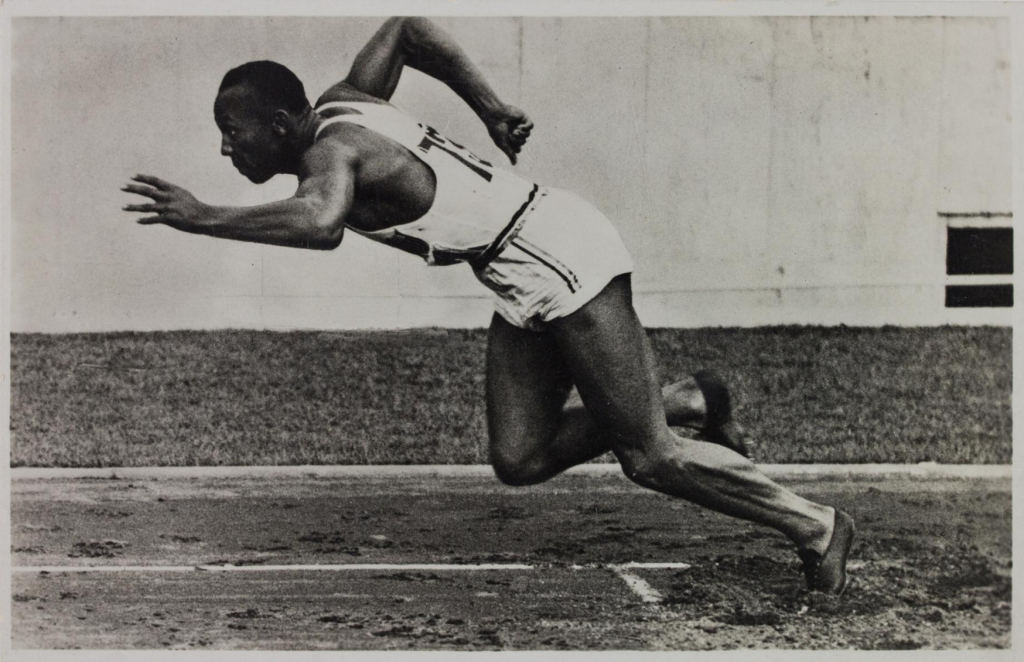
James Cleveland “Jesse” Owens (1913-1980) was an African American track and field athlete. Owens won four gold medals at the Summer Olympics in Germany in 1936. In this informational text, Shelby Ostergaard provides additional information about Owens’ life and success in the Olympics.
Jesse Owens could run. He could run faster and jump longer than anyone in the world. But when he set out to prove this at the Summer Olympics in Berlin in 1936, no one wanted him there. No one wanted him running that race. He wasn’t even welcome in the country, let alone the stadium. But Jesse Owens was an expert at overcoming hurdles and blazing his own path forward. He was determined to compete, no matter how many barriers were in his way.
Early Life
Jesse Owens was born on September 12, 1913, in the town of Oakville, Alabama, but he moved to Cleveland, Ohio, when he was nine. He was actually named James Cleveland Owens and nicknamed J.C. — but in Ohio, one of his teachers couldn’t understand his thick Southern accent. She thought he called himself Jesse. It stuck. His athletic career began at East Technical High School. He won three track and field events while competing in the 1933 National Interscholastic Championships. He went on to race for Ohio State University and was later nicknamed “The Buckeye Bullet,” as Ohio is known as the Buckeye State. While at university, he matched one world record in the 100-yard dash and broke three others: the long jump, the 220-yard dash, and the 220-yard low hurdles. Owens was used to winning. He competed in 42 different collegiate events in 1935 and won all of them. Owens was a star track performer in college, but he also faced major challenges. His school did not offer scholarships for track and field, as the sport was not as well respected back then, so Owens had to work a series of jobs throughout college to pay for his tuition. In addition, the University did not allow Owens to live on campus because of his race. Owens, like many African Americans during this time period, was subject to racist treatment and was often discriminated against.
He would not let this deter 1 him, however, and continued to succeed on the track. Owens enjoyed running because, as he said, “it was something you could do by yourself, and under your own power.” It was this mindset that would lead him to the pinnacle 2 of athletics, where he would face even more challenges.
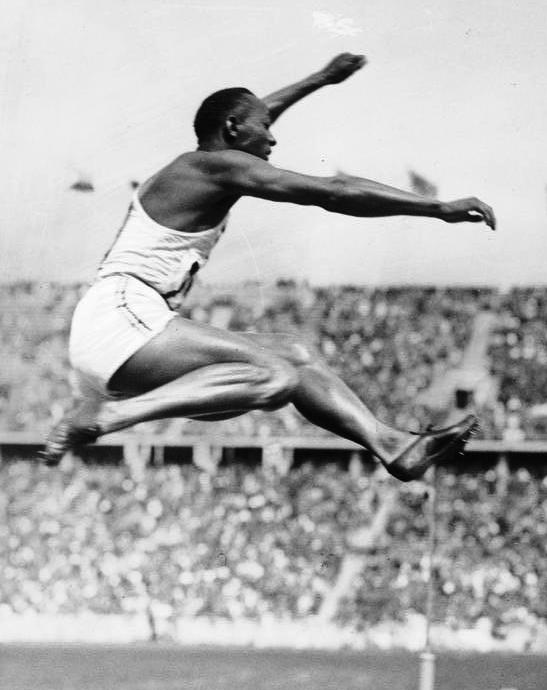
The Olympics
At the 1936 Summer Games, Jesse Owens became the first person ever in Olympic history to win four gold medals in track and field, claiming victory in the long jump, the 100-meter dash, the 200-meter dash, and as a member of the 4×100 meter relay. His feats remained unmatched until the 1984 Summer Olympics. But what Jesse Owens — the son of a sharecropper 3 and the grandson of slaves — did was particularly special because of when and where he did it.
The 1936 Summer Olympics were the first to be broadcast on television and took place in Berlin, Germany, during a turbulent 4 time. Fascism 5 was spreading across Europe, and Germany’s Chancellor, Nazi leader Adolf Hitler, was at the center of it. International tensions were high. Europe was on the brink of World War II, which officially broke out three years after the Summer Olympics. People were terrified. But the games and the excitement surrounding them continued in spite of the impending war.
The reception Owens received in Berlin was cold. Hitler criticized the United States for including athletes of color and Jewish athletes on the roster. He believed that they were inferior to white athletes and could not believe that the United States had chosen people of diverse ethnicities to represent itself on the world stage. Owens was called racial slurs in public and was generally mistreated by the Berliners.
The heightened exposure of the games that broadcast television provided was exciting for Hitler; he believed it was a chance for favorable world news coverage of Nazi Germany. Hitler planned to use the Summer Olympics to prove his theories that “Aryans,” or white Europeans, were a superior race to all others. Jesse Owens’ success at the Olympics undermined this completely, proving that athletes of color were not in any way inferior to white athletes. Hitler was angered by Owens’ success. He stormed out of the stadium and refused to shake Owens’ hand. Instead of stories about German successes, the papers were filled with articles about Owens breaking records and Hitler’s overblown response to his wins. Both Owens’ medals and Hitler’s reaction catapulted Jesse Owens into international fame.
After the Olympics
But fame did not lead to post-Olympic success. Athletes didn’t come home to multi-million dollar endorsements deals then as they do now. Owens was only 22 when he became an international hero, but he never again competed as a traditional athlete. Owens found that there were many people willing to congratulate him on his success but few who would offer him a job. To earn money after the Olympics, Owens raced against cars and horses, and he even played for the basketball exhibition team, the Harlem Globetrotters.
Despite his achievements as a national hero, Owens was still a black man in a deeply divided and racially segregated United States. He faced discrimination and aggression when he returned home. Even as a gold-winning Olympic athlete, he wasn’t allowed to ride in the front of the bus. He couldn’t use the front door to enter public buildings. He couldn’t raise his family where he wanted. Jesse Owens wasn’t invited to shake hands with Adolf Hitler after his biggest win, but he wasn’t invited to shake hands with President Franklin Delano Roosevelt, either.
He eventually set up a public relations and marketing business in Chicago, Illinois, and traveled the country to speak at conventions and other business gatherings. He encouraged individual achievement, regardless of race, class, or creed. 6 His speeches often called back to why he fell in love with running in the first place — it was something he could do himself without having to rely on others to allow him to do it.
Jesse Owens died in 1980 from cancer. His accomplishments continue to inspire even after his passing. It is difficult to achieve something that you have never seen someone else achieve. Before Jesse Owens, there were few black athletes whose success shown so bright. Jesse Owens was celebrated around the world and cheered on by people of every race. He did not let the opinions of anyone hold him back or stop him from running.
- Deter (verb): to discourage someone from doing something
- Pinnacle (noun): the highest point
- Sharecropper (noun): a farmer who gets a portion of the crop they harvest for a landowner
- Turbulent (adjective): characterized by conflict or disorder
- Fascism (noun): a political system characterized by a very powerful leader and state control of social and economic life
- Creed (noun): religion or system of belief
Questions
Instructions: For the following questions, choose the best answer or respond in complete sentences.
- Which statement best expresses the central idea of the text?
- Jesse Owens used his platform after his win at the Olympics to bring attention to how white and black athletes are treated differently.
- Even after Jesse Owens returned from the Olympics, he continued to better himself as an athlete and compete.
- When Jesse Owens returned from the Olympics, he demanded respect and to be treated like the hero he was.
- Jesse Owens didn’t allow the racial discrimination he faced at home or abroad to keep him from doing what he loved and succeeding at it.
- What is the author’s main purpose in the text?
- to show how the Olympic games have changed over time, specifically in the treatment of black athletes
- to provide information about Jesse Owens’ famous wins and the effect that they, and his attitude, had on others
- to criticize the United States for disrespecting Jesse Owens in the past and not giving him the credit he deserved
- to emphasize the discrimination that black athletes from all nations faced during the Olympic games
- In the text, Jesse Owens is described as an international hero. Why were his actions in the Summer Olympics heroic? Despite his heroic status, how was Owens treated and why? How do you think a hero should be treated?
- Jesse Owens overcame several obstacles, both in America and when he competed in the Olympics abroad. How did he approach these obstacles? How did his attitude help him overcome them? Describe a time when you faced something difficult and what you did to overcome it.
- Throughout his life, Owens faced prejudice because of his race, even after winning gold Olympic gold medals. What were the effects of this prejudice? Do you think Owens would have continued to compete if it weren’t for the prejudice he encountered when he returned to America? Why or why not?
“Jesse Owens” by Shelby Ostergaard. Copyright © 2018 by CommonLit, Inc. This text is licensed under CC BY-NC-SA 2.0.
Unless otherwise noted, this content is licensed under the CC BY-NC-SA 4.0 license
Exercise 2
In this exercise, you will use the text below on Amelia Earhart to practice skimming. It’s an original news article from The Indianapolis Times from June 18, 1928, which contained several articles printed around the U.S. and the UK on Earhart’s flight across the Atlantic.
Instructions
- Read the title and subtitles in the text, “Woman Flier Crosses Atlantic in 21 Hours.”
- After reading the title and subtitles, write down two questions you have about Earhart’s journey across the Atlantic.
- Prepare to skim. Focus your attention and hold your eyes on the lines of the text. Now move your eyes quickly, looking for the general answers to your questions. Don’t worry if you find them the first time. Keep moving.
- Skim again. Continue to look for the answers to your questions. Think of it like looking for a lost shoe in a messy room. You know what you are looking for: focus and move quickly.
- Now, imagine that you were writing a short blog on Earhart’s journey across the Atlantic. Skim to find the information that you think would be most relevant to include. Make sure to skip quickly over the information that you would not include. Put a star or highlight the information you think is most interesting and relevant.
- Consider the following questions:
- Did you find it easier to skim when you had a purpose to skim? Can you think of a reason in an academic setting where it would be useful to skim like this?
- When we are doing research, we focus on the information that is relevant, interesting, and easy to understand. How would using this applying this strategy help you do research more efficiently?
Woman Flier Crosses Atlantic in 21 Hours; Lands on Wales Coast: Wins Atlantic Race
Supreme Confidence of Boston Woman in her Plane Proves Justified
SOUTHAMPTON, England, June 18, 1928
Miss Amelia Earhart, a Boston society girl, has succeeded in becoming the first woman to fly across the Atlantic ocean. Three women lost their lives in the attempt to win that distinction—Princess Anne of Lowenstein-Wertheim, Edith Mackaye and Mrs.Frances Grayson. Miss Mildred Doran disappeared in the Pacific on a flight to Hawaii.
From the time she left Boston 15 days ago, Miss Earhart had shown supreme confidence in the ability of her plane, with Wilmer Stultz as co-pilot and Lou Gordon as mechanic, to make the flight. Bad weather conditions and repeated failures of the heavy plane to leave the water of Trepassey Bay with a really adequate supply of gasoline had not discouraged her.
“We’ll get across when we do. start,” she said. “I have supreme confidence in my plane.”
Miss Earhart had said incidentally that if this flight succeeded, she intended to make another flight with herself as chief pilot. She hinted that her flight might be a solo one, like that of Charles A. Lindbergh, whom she so closely resembles.
Miss Earhart’s farewell message to the American people, handed to a United Press correspondent in Newfoundland as she boarded the Friendship for her flight, said:
“Saluting Old Glory, and thanking our friends for their many expressions of interest, good luck and encouragement, we bid au revoir, not farewell, to the dear old U. S. A., within a few minutes of the time the Friendship vaults into the Newfoundland air on our eastward flight
over the Atlantic.
“Our confidence in the successful termination of our adventure is unshaken.”
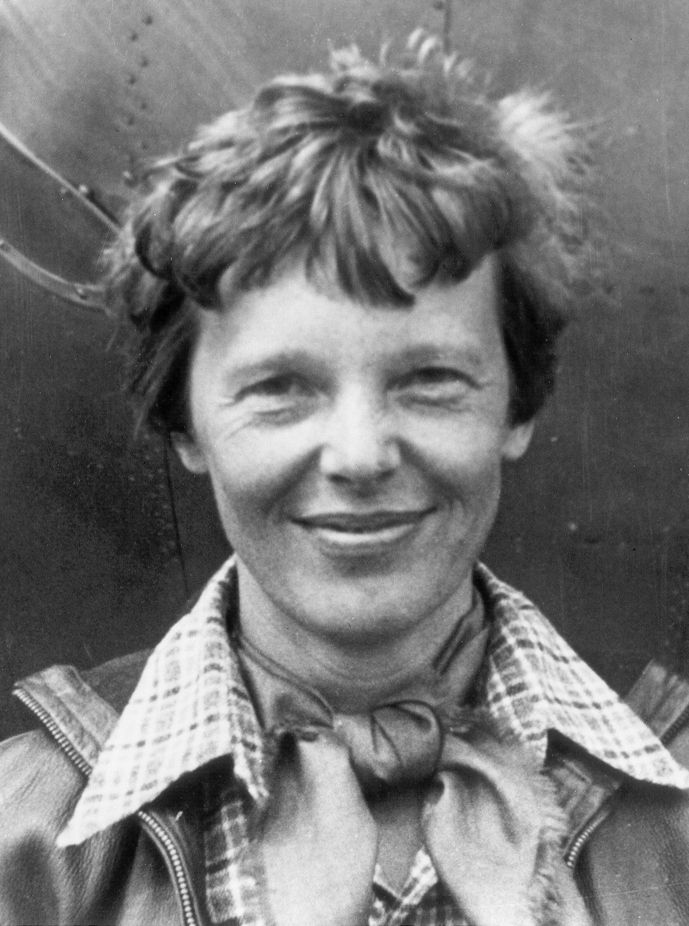
Amelia Earhart First of Sex to Accomplish Great Air Feat
BY LEONARD SMITH, United Press Special Correspondent
BURRYPORT, Wales, June 18, 1928
The trans-Atlantic, monoplane Friendship, with Miss Amelia Earhart, first woman to make a trans-ocean flight, as copilot, landed safely in Burry inlet, Bristol channel, at 12 :45 p.m. today, after a flight of 2,000 miles from Trepassey bay, N. F.
Shortage of gasoline caused the Friendship’s landing 135 miles from Southampton, its destination. Arrangements were made at once to obtain gasoline and it was planned to continue to Southampton late today if the weather was favorable.
Wilmer Stultz, who with Lou Gordon, mechanic, completed the crew of the Frienship, told the United Press correspondent, after he and his companions had been taken to Burry port, off which the plane landed, that he had been flying blind for eight hours before the landing.
Fail to See Ireland
“We failed entirely to see Ireland,” Stultz, the chief pilot said. “We did not know where we were when we landed.
“We thought we were in the vicinity of Lands End, but did not know our location definitely until a motorboat came out from Burryport to meet us.
“Aside from that we had no real trouble.
“Everybody aboard was all right when the Friendship landed, although we all are very tired.
“The weather during the entire flight was cloudy.
“At 4:30 a. m. today we lost our bearings and came down to within 400 feet.
Try to Drop Messages
“We tried to drop messages to aliner (The America) to get our position, but could not get either one of them aboard (The America reported this incident as occurring seventy miles east of Queenstown, Ireland.)
“We are in fine shape, and can proceed to Southampton, our destination, whenever we are ready.”
The Friendship landed about a mile and a half offshore. From the excited crowd watching the giant plane, an emergency crew was selected and a motorboat sped out to the plane.
“Where are we?” asked Miss Earhart and Stultz in unison, as the boat drew up alongside. Captain Fisher, in command of the motorboat, found Miss Earhart, Stultz and Gordon in normal condition, but very tired.
Stultz, as soon as he got ashore, began consulting maps to find his exact location, and then telephoned to Southampton, to the agents of the Friendship there.
Makes 100 Miles an Hour
The Friendship completed its flight in twenty hours fifty-four minutes, averaging almost exactly 100 miles an hour. Favorable winds thus increased its normal cruising speed by ten miles an hour.
The plane left Boston fifteen days ago for Trepassey and had been held there until 9:51 (Eastern standard time) yesterday by a discouraging series of misfortunes. It left Trepassey with only 750 gallons of fuel—barely enough under favorable conditions for the planned 2,070-mile flight to Southampton.
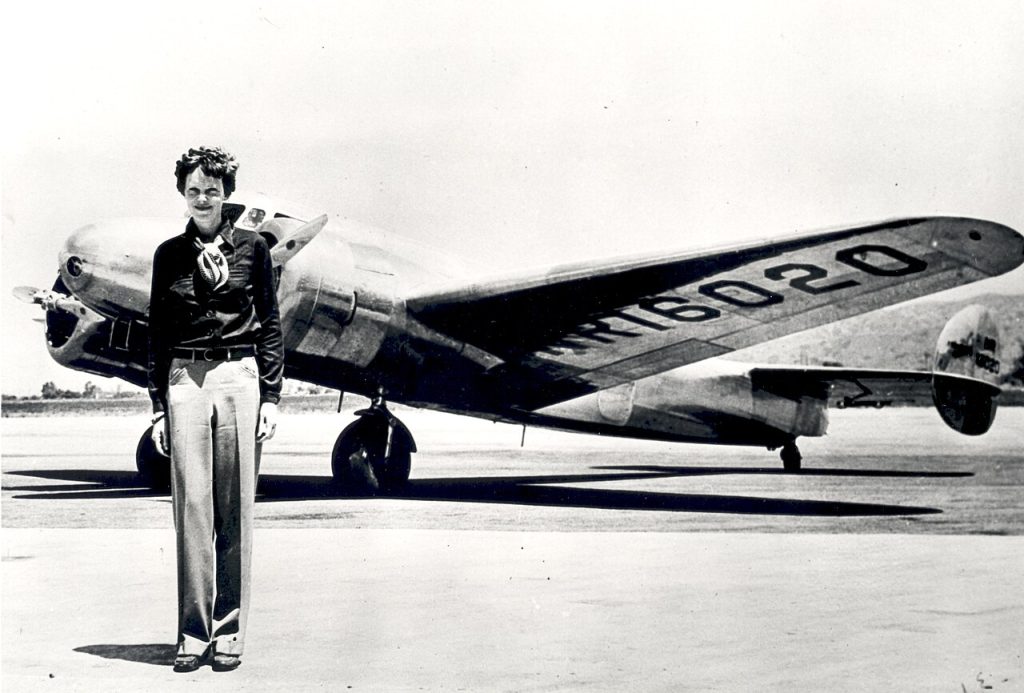
Mother is Overjoyed at Flight Success
By United Press
MEDFORD, Massachusetts, June 18.
Mrs. Otis Earhart, mother of Miss Amelia Earhart, was overjoyed today when she was informed of her daughter’s safety. Mrs. Earhart and her other daughter, Muriel, instructor in a school here, had waited throughout the morning for news of the plane’s progress and had been informed hourly by United Press dispatches.
“We do not know anything of Amelia’s plans,” Miss Earhart said, “but we expect her to be home soon.” –
‘The Girl Who Walked Alone’ at School
By United Press
CHICAGO, Illinois, June 18.
Miss Amelia Earhart was remembered by her friends of Hyde Park High School days as the girl “who walked alone.”
Former classmates of the girl flier, who today became the first woman to fly across the Atlantic, recalled today that she was a “dreamer,” and that her dreaming kept her apart from school activities.
Major Reed Landis, son of Judge Kenesaw Mountain Landis, and a former classmate of Miss Earhart at Hyde Park School, was “tickled to death” when he learned of Miss Earhart’s successful landing.
“It certainly is fine,” Landis slid. “Every one of her old classmates is proud of her.”
Media Attributions
- Water ski © Unknown Author is licensed under a CC0 (Creative Commons Zero) license
- Muse_reading_Louvre_CA2220_(cropped) © Klügmann Painter is licensed under a Public Domain license
- SM_2009-0548_VP © N.N. is licensed under a CC BY-SA (Attribution ShareAlike) license
- Jesse Owens © Unknown Author is licensed under a CC BY-SA (Attribution ShareAlike) license
- Amelia_Earhart_standing_under_nose_of_her_Lockheed_Model_10-E_Electra,_small_(cropped) © Underwood & Underwood is licensed under a Public Domain license
- Amelia_Earhart_-_GPN-2002-000211 © Smithsonian Institution is licensed under a Public Domain license

